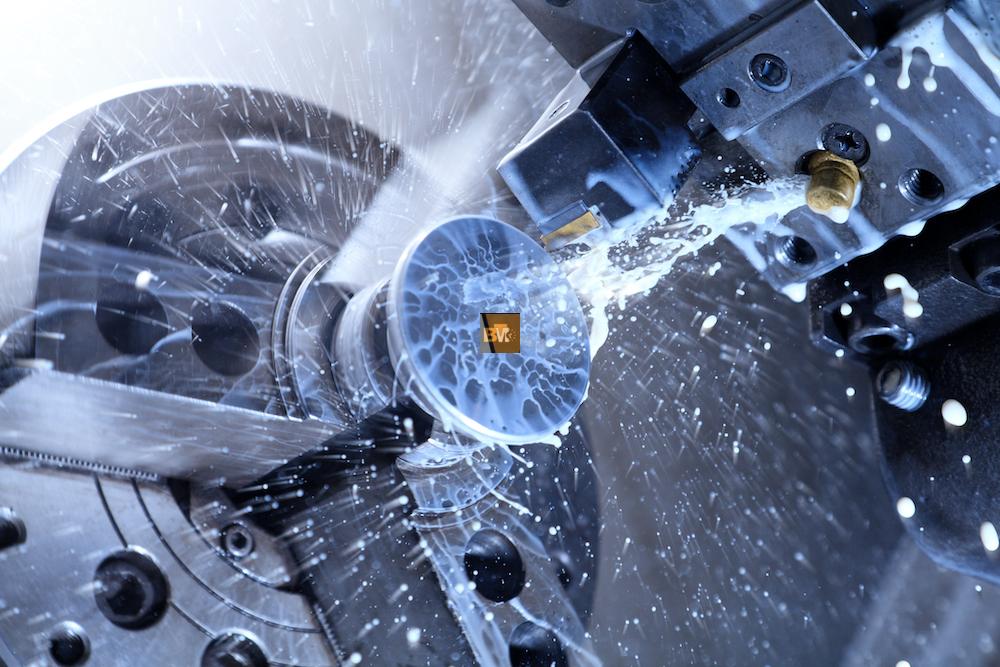In precision machining, choosing the right equipment is key to your business’s success. CNC mills and lathes are two of the most common machines you’ll encounter in this field. Learn about the different types of machines and their uses. You can then discover their many benefits.
When comparing CNC mill vs lathe, consider their functions, operations, and precision. Each tool suits different project needs. So, know the differences. They will help you choose the best tool for your work.
What is a CNC mill?
A CNC mill is a versatile tool. It uses computer control to automate cutting. It works by moving a cutting tool across many axes to create complex shapes and designs. CNC mills are perfect for tasks needing precision and detail. They suit many industries, from aerospace to automotive.
Advantages of CNC mills
- Complex Shapes: CNC mills can create intricate designs that manual machines cannot.
- Multi-Axis Capability: CNC mills can have 3, 4, or 5 axes. They can produce parts from different angles without repositioning the workpiece.
- High Precision: CNC mills are very accurate. They reduce the need for extensive finishing work.
What is a lathe?
A lathe is a machine tool that rotates the workpiece against a stationary cutting tool to shape it. While traditional lathes need manual operation, CNC lathes use computer control for automation. Lathes are important for producing cylindrical parts. They excel at turning, drilling, and threading.
Advantages of Lathes:
Simplicity: Lathes are straightforward to operate, which makes them accessible to beginners.
Lathes can produce cylindrical parts with precision. They are efficient for high-volume production.
Less Tool Wear: The cutting tool is stationary. So, it wears less than in some milling operations.
CNC Mill vs. Lathe: Key Differences:
| Feature | CNC Mill | Lathe |
| Operation | Multi-axis cutting | Rotating workpiece against a tool |
| Ideal for | Complex shapes and flat surfaces | Cylindrical parts and simpler shapes |
| Setup Time | Typically longer | Usually quicker |
| Precision | High precision on detailed work | Precision on cylindrical shapes |
What are some common machining techniques used with CNC mills and lathes?
Common Machining Techniques
For CNC mills:
- Milling: The main operation. A rotating cutting tool removes material from the workpiece. It creates flat or contoured surfaces.
- Face milling cuts flat surfaces on the workpiece. A machinist uses a flat cutter. It stands perpendicular to the surface being machined.
- End milling: It uses a rotating tool with cutting edges on the end. It creates slots, pockets, or intricate profiles.
- Drilling: Creating holes in the workpiece with a rotating drill bit. It is often done as a secondary operation after milling.
- Tapping: It creates internal threads in a hole using a tapping tool. This can be part of the milling process.
- Profiling: Using multi-axis tools to create complex shapes on the workpiece.
- Slotting: Cutting narrow slots into the workpiece. It often requires specialized tools to achieve the desired width.
For CNC lathes:
- Turning: The main process. A fixed cutting tool rotates against a workpiece to reduce its diameter and shape it.
- Facing: It’s removing material from the end of a workpiece to create a flat surface. This is usually done at the start of the turning process.
- Drilling: This, like milling, creates holes in a rotating workpiece using a drill bit.
- Boring:
Enlarging a hole in the workpiece for precision sizing, often with a single-point tool.
Threading: Cutting threads on the workpiece with specialized tools, often after turning.
- Grooving:
- Making shallow cuts or grooves on a workpiece’s surface for design or assembly.
- Knurling: It’s a process that creates a textured pattern on a workpiece. It improves grip. You often see it on handles and knobs.
For your machining needs, BORUI CNC specializes in advanced solutions. They offer high-quality CNC mills and lathes for precise and efficient manufacturing.
When to Choose a CNC Mill
- If your project has complex geometries or multidimensional features,
- When high precision is critical for the end product.
- For machining materials from many sides without repositioning.
When to Choose a Lathe
- If your focus is on cylindrical parts, such as shafts or bushings,
- When you need a straightforward, fast production process for simpler designs,
- If you have a limited budget and are looking for cost-effective solutions.
FAQs
What types of materials can a CNC mill machine?
CNC mills can work with many materials. These include metals (aluminum, steel), plastics, wood, and composites.
What are the primary applications of a CNC lathe?
Manufacturers primarily use CNC lathes for turning. They make shafts, rings, and cylinders.
Which machine is better for complex shapes?
CNC mills are better for complex shapes and designs. They have multi-axis capabilities.
How does the programming differ between CNC mills and lathes?
Both use G-code for programming. But, the commands and toolpaths vary by the machining process and part geometry.
What are the typical costs associated with CNC mills and lathes?
CNC mills are usually more expensive than lathes. Their complexity drives up the cost. Prices vary based on brand, size, and features.
Conclusion.
Deciding between a CNC mill and a lathe depends on your specific business needs. Assess your parts, design complexity, and production volume. Know the strengths and weaknesses of each machine. Then, choose the right equipment to boost your manufacturing.
For detailed comparisons of CNC mills and lathes, see our guide on CNC Mill vs. Lathe.





Leave a Reply